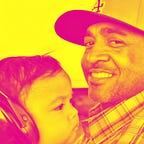The Perpetual Student
I was at the University of Southern California today. Not as a middle-aged post-grad student or as an adjunct professor, but as a guest presenter to a class of EDM students. I was fascinated to hear there was an electronic dance music course at the elite university when I was first asked to speak there a few years back by assistant professor Sean C. Nye. Returning this semester, I brought along two experts in music, former URB editor Joshua Glazer, and Valerie Lee, current digital editor of international dance music bible Mixmag. Our topic was global festival culture and “techno tourism,” from Coachella (who I work for) and EDC in the states to events in Taiwan, Iran, India and beyond.
Two days before, I was at an industry conference, in the audience for an interview with Michael Lang, the co-creator of Woodstock—seen by many as the inspiration for modern festivals—and Robert Richards, the commercial director for the U.K.’s long-running Glastonbury festival. The 30- to 50-something industry crowd geeked out a bit as Lang and Richards discussed 50 years of festival culture. The interviewer romanced and lauded the two festivals for influencing generations of music industry folks and their products, from Lollapalooza to Desert Trip. And I was happy to gush along with adoration and a heavy dose of Pavlovian appreciation for, I guess, promoting the industry that I work in today. To his credit, Michael Lang responded to topics without pretense, something his anointed hero status could have easily afforded him.
But back to a room full of kids born circa 1995, a year where I was already several years into publishing a magazine heavily steeped in rave culture. Why would I make any assumption they’d be anything more than mildly bemused about hippies their grandparents’ age in the pre-molly era of questionable brown acid? As I stated to the class, my sepia-toned vintage festival slides in the background — each generation deserves its folklore, context, and inspiration.
And even as I’ve spent my entire career as a professional dot-connector working to illuminate the pathways between cultures, sounds, and movements, I try hard to resist any entitlement when it comes to espousing my opinions as fact. As much as I appreciated getting a glimpse of the legendary ’60s counterculture pioneer Timothy Leary when he surfaced in the early-’90s SoCal warehouse party community, I doubt I would have prescribed to his take on the burgeoning illicit scene. He was in his 70s, and I was a scene stalwart in my early 20s. As reminiscent of the original Summer of Love movement as some of our paisley-adorned clothes, peace signs, and P.L.U.R. rallying cries were, the multicultural and effervescent tribalism erupting in Los Angeles and outlying regions circa the early ’90s was a defiantly original and upgraded take on all things that came before it. Similarities aside, we were not parroting the hippies. Accurate or merely the idealization of youth, it didn’t matter. This moment was ours to define.
Sure, we borrowed from Woodstock, ’80s hip-hop, New York b-boys, U.K. acid house, disco, LA’s Latino community and undoubtedly a few other tribes, but we wanted to be allowed to gestate, procreate a sound and culture and develop our language for this new moment. The quickly brewing southern California scene—the earliest ground zero for what would become the modern EDM movement in the U.S.—was a dirty but impressive alloy of aesthetics, geographies, archetypes, sounds, protocols, and constituents. It was such a magical time because of its laundry list of content and context. It would have been an empty and purposeless movement without it.
But almost nobody outside of the scene had any real understanding of how this tonic was synthesized, too often clumsily or arrogantly applying some arcane rock lens to the bold future sound we were crafting. In URB’s masthead, I’d write, “This ain’t the future of rock n roll.” But even inside our counterculture bubble, the origin outlines were faint and shifting, none of us with the advantage of historical reflection that only years can bring. So those with a platform and a voice did their best to give it context, weight and, most importantly, permanence, at least in words, images and materials.
So, here I am, 25 years later in front of humans not alive when what I’m explaining came around the first time, and I’m trying hard not to lecture. To not have all the answers to the persistent questions that haunted us two decades ago (drugs, diversity, economics, gender politics, etc.) is OK. The last thing I’d have trusted in 1990 was anybody over 30.
History doesn’t repeat itself, but it echoes. Electronic music today is an echo of its past, there’s no doubt. Far from a virgin birth, it’s as much a mixed up child of too many parents to count and equally as many influences and raisons d’être. But, for this class of young, curious EDM students, I remain humble. Sure of little. Open to learn. Back in school.
P.S. Watch the Woodstock documentary.
